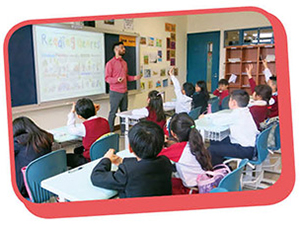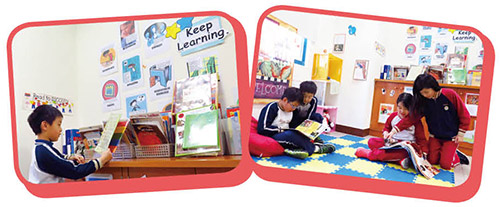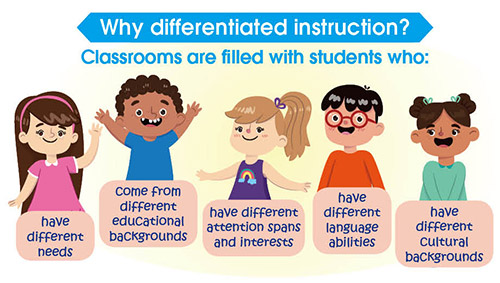
Let’s Read Together
國際處主任 賴國宜
How long do you spend on reading for personal interest per day? A study from the U.S. Bureau of Labor Statistics has found that the average American spends only 19 minutes a day on reading; young people read even less. Mr. Spevack's article explains how the grade three foreign teachers encourage our students to read more willingly and more often by incorporating an independent reading program where students are allotted twenty minutes each week to choose what they want to read and what they want to learn. We hope this independent reading will lay the foundation for them to become enthusiastic life-long readers.
The grade one Chinese English teachers integrated the English project with the Christmas carol show to help children feel like part of a team to improve their social and communication skills. We believe the ability to work with others as a team isn't just a skill children need at school; it's an essential skill they will use for the rest of their lives. I hope you enjoy our grade one students' writing and drawings about their experience of working together.
工作之餘,您一天花多少時間閱讀,電子媒體興起,國內外的統計都顯示,個人閱讀的時間一再下降,尤其是青少年和兒童,除了學校規定的作業,幾乎很少在休閒時間主動閱讀。從上學期開始,三年級外師們開始在各班進行獨立閱讀的活動,在教室布置一個小書區,每周固定20到40分鐘,讓學生自由選擇讀本,安靜閱讀,Mr. Spevack的主題報導,說明外師設計此課程的目的和執行的現況。透過選擇自己想看的書籍,培養孩子閱讀的習慣,欣賞各種文學作品,進而對自己的學習產生更多的主控權和責任感。
社會能力的發展,是兒童期最關鍵的成長任務,在同儕互動中,發展出積極正向的人際關係,培養合作溝通的能力,對兒童日後人格和情緒的發展有重大的影響。一年級的中籍英師利用Let's Work Together這個專題,結合聖誕節歌謠表演活動,引導剛上小學的寶貝們,一起探究如何在團隊中合作、一起成長、一起學習變得更好。
三月了,天氣漸漸暖和,春暖花開、生氣蓬勃的季節,是個適合閱讀的好時節,建議您也可以和孩子約定個家庭閱讀時間,一起關掉電腦和手機,找些好書,靜靜閱讀,享受文學的美好。

~ Jaryd Spevack
English Teacher, International Department
Every child is unique, having their own special interests, skills and motivations that affect how and at what pace they learn. So how can educators provide students with opportunities to study material that interests them individually? In grade three at Kang Chiao, we do so by incorporating an independent reading program.

In grade three we give students the opportunity to read stories independently in class purely for pleasure. Students are given 20 to 40 minutes each week to quietly read story books that teachers and students collaboratively choose. This allows students to apply their phonics skills at their own pace. The two questions of importance at the start of the semester are what books will interest each student, and at what level will they gain confidence but still be challenged? So to start, teachers discuss with their class what topics and types of stories interest them. Adventure stories? Fairy Tales? Realistic Fiction? Sports? Each teacher then selects books from different genres and of varying DRA levels from our school library. This ensures that each student can find something they will enjoy, regardless of their ability. During reading time, the teacher will display the books, explain their content and difficulty level, and then allow students to choose the book they will read. Time is also provided for students to discuss what books they read and if they enjoyed them.

As students read independently, the teacher is able to spend time with students individually. They are able to answer important questions for each student like what subjects interest them, how well they can express ideas they read, and at what DRA level they can best apply their phonics skills. The teacher adjusts the books chosen each week to maximize interest and motivation, while also balancing a suitable learning challenge and building of confidence. Thus students improve their reading skills at their own pace.

Making sure all the students are equally motivated and challenged is what our program is all about. It is about making sure the highest achieving students are not bored because everything is too easy, while also ensuring students who may be struggling don’t give up because everything is too hard. Providing material independent of our curriculum and allowing student choice keeps everyone engaged. It also keeps students on task with other work. They are self motivated to finish their work on time so they have more time to read the book they choose. Students gain confidence while also reinforcing and improving their phonics skills. Each student’s needs are met individually, rather than teaching to the top or the bottom of the class. In the end, this program helps both teachers and students remember that everyone is unique, and that our learning environment should reflect that.

![]() 全文下載)
全文下載)